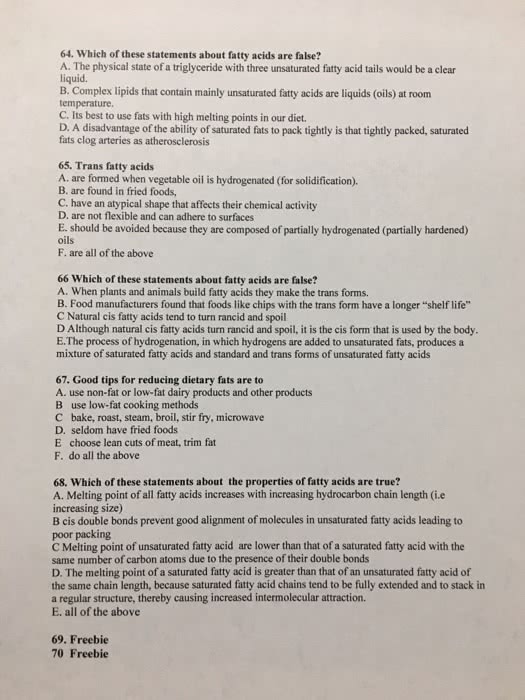FND 301 Lecture Notes - Lecture 3: Lipid Bilayer, Cardiovascular Disease, Emulsion
Document Summary
Effects of fatty acid saturation and chain length on food: fats and oils. Firmer foods have a greater degree of saturation and a longer carbon chain. Polyunsaturated vegetable oils are liquid at room temp and most saturated animal fats are solid. Saturated fats are more stable bc. unsaturated fats contain double bonds. Unsaturated fats are more susceptible to oxidation (going bad) To prevent oxidation, manufacturers store products in air tight packages, add antioxidants or hydrogenation. Hydrogenation: saturating unsaturated fats by adding h atoms. Foods that undergo hydrogenation contain trans-fatty acids. Trans-fatty acids: configuration of unsaturated fatty acids around the double bond that is rarely found in nature. Most fatty acids found in nature are in cis. Most trans-fatty acids in our diets comes from foods that have undergone hydrogenation. In this process, fatty acids in cis configuration undergo changes to form trans configuration. Industrial trans-fatty acids increase risk of cardiovascular disease but naturally occurring trans-fatty acids may be protective.


